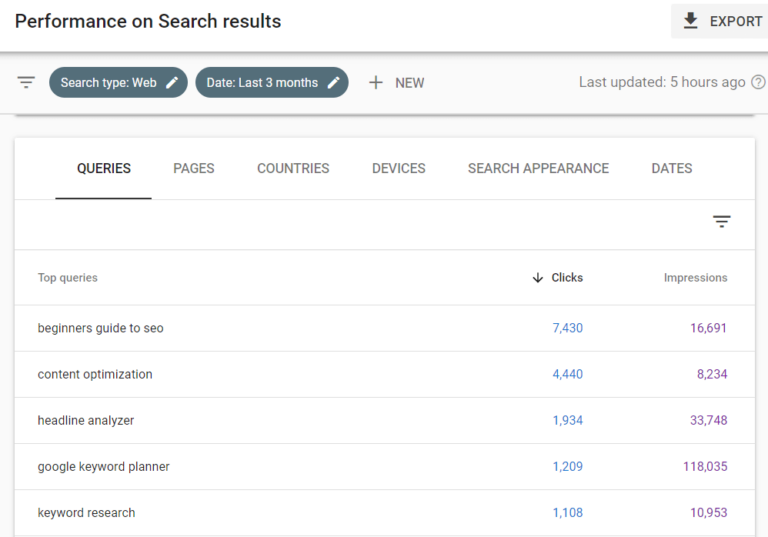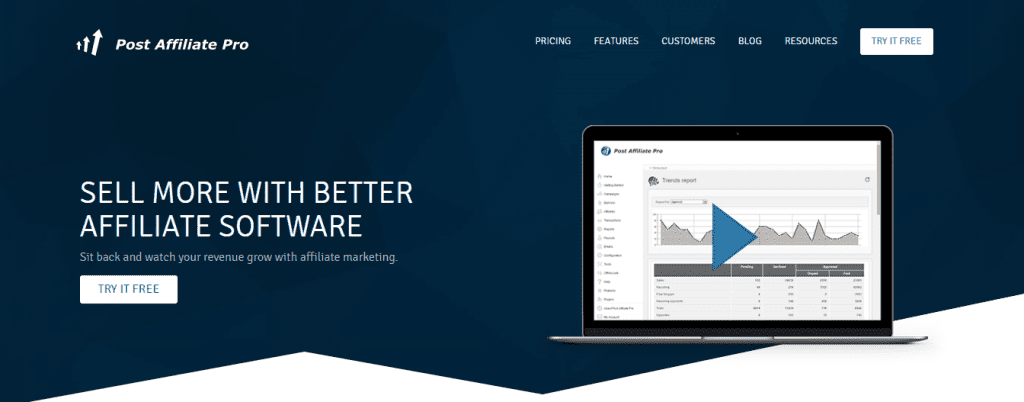If you’re looking to turn your passion into a profitable online venture, product-based affiliate marketing might be just what you need. Essentially, it’s a way to earn commissions by promoting products you love and believe in. You don’t have to handle inventory or shipping—your main job is to connect potential buyers with products through your website. Imagine sharing a favorite gadget or skincare item, and whenever someone makes a purchase through your link, you earn a cut. It’s a win-win: you help your audience discover great products, and you earn money for doing so. Ready to dive in? Let’s explore how this works and why it’s such a popular choice for bloggers and entrepreneurs alike.
Why Choose WordPress for Affiliate Marketing Success

When it comes to building a successful affiliate marketing site, WordPress stands out as the top choice—and for good reason. It powers over 40% of all websites on the internet, which speaks volumes about its flexibility and reliability. But what makes WordPress particularly ideal for affiliate marketers?
- User-Friendly Interface: You don’t need to be a tech wizard to set up or manage a WordPress site. Its intuitive dashboard makes adding content, images, and links straightforward.
- Extensive Plugin Ecosystem: There are thousands of plugins designed to enhance your affiliate marketing efforts. Want to add review tables, compare products, or optimize for SEO? There’s a plugin for that.
- Customizable Themes: Your site’s appearance can be tailored with themes, making it easy to create a professional, attractive look that appeals to your audience.
- SEO-Friendly Structure: WordPress is built with search engine optimization in mind. Plus, plugins like Yoast SEO help you optimize your content to rank higher in search results, bringing in more organic traffic.
- Support and Community: With a large community of users and developers, finding support or tutorials is simple—no matter what problem you encounter.
All these features combine to create a powerful platform that can grow with your affiliate marketing business. Whether you’re just starting out or looking to scale, WordPress offers the tools and flexibility you need to succeed in the competitive world of product-based affiliate marketing.
3. Setting Up Your WordPress Website for Affiliate Marketing

Alright, so you’re ready to dive into affiliate marketing on your WordPress site—awesome! First things first, you want to make sure your website is set up in a way that attracts visitors, keeps them engaged, and makes it easy for them to click on your affiliate links. Let’s walk through the key steps to get your site primed for success.
Choose a Reliable Hosting Provider: Your website’s performance hugely impacts user experience and SEO. Pick a hosting provider known for speed and uptime—think Bluehost, SiteGround, or WP Engine. They often have one-click WordPress install options, which makes setup a breeze.
Install a User-Friendly Theme: The theme sets the look and feel of your site. Opt for a clean, responsive theme that’s easy to customize. Popular choices include Astra, GeneratePress, or OceanWP. These themes work well with page builders and are optimized for speed.
Install Essential Plugins: Plugins add functionality without coding. Here are a few must-haves for affiliate marketing:
- SEO Plugin (like Yoast SEO or Rank Math) to optimize your content for search engines.
- Affiliate Link Management (like ThirstyAffiliates or Pretty Links) to cloak and organize your links.
- Cache Plugin (like WP Super Cache or W3 Total Cache) to speed up your site.
- Security Plugin (like Wordfence) to keep your site safe.
Once your plugins are installed, configure them properly. For example, set up your affiliate link cloaking plugin to make links look clean and trustworthy. Also, ensure your site is mobile-friendly—most modern themes are, but double-check on different devices.
Create Engaging Content: Now that your site looks good and runs smoothly, focus on creating valuable content. Blog posts, reviews, comparison pages, and tutorials are perfect for affiliate marketing. Remember, honesty and transparency build trust, so always disclose your affiliate relationships.
Finally, build your email list with opt-in forms and start promoting your content on social media. The more traffic you generate, the more opportunities you have to earn commissions!
4. Finding the Best Affiliate Programs and Products to Promote
Now that your website is set up and ready to go, it’s time to find those golden nuggets—affiliate programs and products that align with your niche and appeal to your audience. Choosing the right products is crucial for building trust and maximizing your earnings.
Start with Your Niche: Think about what your website is about and what your audience cares about. For example, if you run a tech blog, promoting gadgets, software, or online courses makes sense. If you focus on fitness, then supplements, workout gear, or fitness apps are your go-to products.
Look for Reputable Affiliate Programs: Not all programs are created equal. Here are some popular options:
- Amazon Associates: The giant retailer. It offers a vast range of products, which makes it easy to promote items your audience already trusts.
- ShareASale and CJ Affiliate: These networks connect you with hundreds of brands across various niches. You can browse and choose programs that fit your site.
- Specific Brand Programs: Many companies run their own affiliate programs—think Bluehost, Shopify, or Adobe. These often pay higher commissions and provide dedicated support.
Evaluate the Products: Promote products that you genuinely believe in. Consider these factors:
- Quality and Reputation: Only recommend products with good reviews and solid reputations.
- Commission Rates: Higher commissions are tempting but balance that with product quality.
- Cookie Duration: Longer cookie durations mean you get credited for sales made days or weeks after the initial click.
Research Your Audience’s Needs: Use surveys, comments, or analytics to understand what your visitors want. Promote products that solve their problems or enhance their lives.
Stay Updated and Experiment: The best affiliate programs evolve. Keep an eye on industry news, sign up for affiliate newsletters, and test different products to see what resonates best with your audience.
Remember, the key to successful affiliate marketing isn’t just promoting random products—it’s about building trust and offering genuine value. When your recommendations genuinely help your visitors, they’re more likely to click, buy, and become loyal followers.
5. Creating High-Quality Content to Drive Conversions
When it comes to affiliate marketing, content really is king. But not just any content — it needs to be high-quality, engaging, and genuinely helpful to your audience. Think of your content as the bridge that connects your visitors to the products you’re promoting. If it’s compelling enough, they’ll be more likely to trust your recommendations and click through to make a purchase.
So, how do you create content that truly drives conversions? Here are some tips:
- Understand Your Audience: Know what problems they’re facing, what solutions they’re seeking, and what kind of tone resonates with them. Use surveys, comments, or analytics to get insights.
- Be Honest and Transparent: Always disclose your affiliate relationships clearly. Trust is crucial, and being upfront about your affiliations builds credibility.
- Provide Real Value: Instead of just listing product features, share personal experiences, detailed reviews, comparisons, or how-to guides. Help your readers make informed decisions.
- Incorporate Visuals: Use high-quality images, infographics, or videos to make your content more engaging and easier to understand.
- Use Effective Calls to Action (CTAs): Encourage your readers to take action with clear and persuasive CTAs like “Check Price,” “Learn More,” or “Get Yours Today.”
Remember, the goal is to build trust and establish yourself as a reliable source of information. When your content genuinely helps your audience, they’re more likely to click on your affiliate links and convert into customers.
Additionally, keep your content fresh and updated. Regularly review and revise your articles to include the latest product info, trends, and user feedback. This ongoing effort keeps your site relevant and authoritative, making visitors more confident in your recommendations.
6. Optimizing Your Website for Better SEO and Higher Traffic
No matter how great your content is, if your website isn’t optimized for search engines, you might be missing out on a ton of traffic. SEO (Search Engine Optimization) is the secret sauce that helps your site rank higher on Google and other search engines, bringing in organic visitors who are already interested in your niche.
Here’s how you can optimize your WordPress site for better SEO and increased traffic:
1. Keyword Research
Identify the keywords your target audience is searching for. Use tools like Google Keyword Planner, Ahrefs, or SEMrush to find relevant keywords with good search volume and manageable competition. Incorporate these keywords naturally into your titles, headings, and content.
2. On-Page SEO
- Title Tags: Craft compelling, keyword-rich titles for each page and post.
- Meta Descriptions: Write clear summaries that include your main keywords and entice clicks.
- Header Tags: Use H2s, H3s, etc., to organize your content and include keywords where appropriate.
- Image Optimization: Compress images for faster loading and add descriptive alt text with keywords.
3. Technical SEO
- Fast Loading Speed: Use caching plugins like W3 Total Cache or WP Rocket, optimize images, and choose a reliable hosting provider.
- Mobile-Friendly Design: Ensure your site looks great and functions well on all devices.
- Secure Your Site: Use HTTPS to protect your visitors and boost your rankings.
- Fix Broken Links: Regularly check for and repair dead links to improve user experience and SEO.
4. Content Strategy
Consistently publish high-quality, keyword-optimized content that answers real questions and solves problems. Use a mix of blog posts, reviews, tutorials, and videos to keep your audience engaged and coming back for more.
5. Building Backlinks and Authority
Earn backlinks from reputable sites by guest posting, collaborating with influencers, or creating share-worthy content. The more authoritative your site appears, the higher it will rank.
By focusing on both on-page and technical SEO, and maintaining a steady flow of valuable content, you’ll gradually increase your website’s visibility, attract more visitors, and ultimately boost your affiliate conversions. Remember, SEO isn’t a one-time task — it’s an ongoing process that pays off over time!
7. Using Plugins and Tools to Enhance Affiliate Marketing Efforts
When it comes to affiliate marketing on WordPress, leveraging the right plugins and tools can make a huge difference in how efficiently you manage and grow your efforts. Think of these tools as your digital assistants—they help automate tasks, improve user experience, and optimize your campaigns for better results.
First up, let’s talk about affiliate link management. Plugins like ThirstyAffiliates or Pretty Links are fantastic for cloaking, managing, and tracking your affiliate links. They make your links look cleaner and more trustworthy, which can boost click-through rates. Plus, they give you insights into how your links are performing, so you know what’s working.
Next, you’ll want tools to help with content optimization and SEO. Plugins like Yoast SEO or All in One SEO Pack ensure your content is search-engine friendly, helping attract organic traffic to your site. Higher traffic often translates to more potential affiliate clicks.
Another valuable plugin is MonsterInsights, which integrates Google Analytics with your WordPress dashboard. It simplifies the process of tracking visitor behavior, page performance, and conversions. With these insights, you can tweak your strategies to boost engagement and affiliate sales.
For email marketing and list building, consider tools like OptinMonster or Bloom. They help you create eye-catching opt-in forms to grow your email list—crucial for nurturing your audience and promoting affiliate products directly to interested subscribers.
Lastly, don’t forget about social sharing plugins like AddToAny or ShareThis. These make it easy for visitors to share your content across their social networks, increasing your reach organically.
In a nutshell, choosing the right combination of plugins and tools can streamline your workflow, enhance your marketing efforts, and ultimately lead to higher conversions. Experiment, see what fits your style, and don’t be afraid to explore new tools as your affiliate marketing journey evolves.
8. Tracking Your Performance and Analyzing Results
You might be putting in a ton of effort, but how do you know what’s really working? That’s where tracking and analyzing your affiliate marketing performance come into play. Without data, you’re flying blind, and that’s never a good idea if you want to grow steadily.
The first step is setting up reliable tracking. If you’re using plugins like MonsterInsights, you already have Google Analytics integrated into your site. This allows you to see valuable data such as visitor behavior, popular pages, and conversion paths. Make sure you set up goals in Google Analytics specifically for your affiliate links or conversions—this way, you can measure how many visitors are completing desired actions.
Next, pay attention to key metrics like:
- Click-through rate (CTR): How many visitors click on your affiliate links?
- Conversion rate: How many of those clicks turn into actual sales?
- Average order value: Are your visitors spending enough once they’re on the merchant’s site?
- Revenue: How much are you earning from your affiliate links?
Tracking these numbers helps you identify which products or strategies are performing well and which aren’t. For example, if a particular review page has high traffic but low conversions, you might need to tweak your call-to-action or improve the content.
Using reports from your analytics tools, you can also perform A/B testing—try different headlines, images, or placements—and see what resonates best with your audience. Keep a close eye on your funnel: Are visitors dropping off at certain points? If so, optimize those areas.
Remember, analyzing results isn’t a one-time task. Make it a regular habit—weekly or monthly reviews help you stay on top of trends and adjust your tactics proactively. The more data you gather, the better you’ll understand your audience and how to serve them with relevant affiliate offers.
In summary, tracking and analyzing are the backbone of a successful affiliate marketing strategy. With the right tools and a keen eye on your metrics, you’ll be able to fine-tune your approach, increase your income, and turn your WordPress site into a well-oiled affiliate machine.
9. Strategies to Increase Affiliate Revenue and Grow Your Audience
So, you’ve set up your affiliate marketing platform on WordPress—great! But now, how do you actually boost your earnings and expand your audience? Don’t worry, I’ve got some practical strategies that can help you level up your game.
1. Focus on Quality Content
Content is still king. Create valuable, honest, and engaging content that resonates with your target audience. Think reviews, how-to guides, comparisons, and tutorials that help your visitors make informed decisions. The more helpful your content, the more trust you build—and trust equals clicks and sales.
2. Use Multiple Traffic Sources
- Social Media: Share your content on platforms like Instagram, Facebook, Pinterest, or TikTok. Each platform attracts different audiences, so diversify your efforts.
- Email Marketing: Build an email list and send regular newsletters with product recommendations, tips, or special deals.
- SEO Optimization: Invest in keyword research and on-page SEO to rank higher in search engines, bringing in organic traffic.
3. Promote High-Converting Products
Not all products are created equal. Use analytics to identify which products perform best and focus your efforts there. Also, consider promoting products with attractive commissions and good reviews to increase your chances of earning commissions.
4. Leverage Email Sequences and Funnels
Set up automated email sequences that nurture your subscribers, recommend products, and encourage repeat visits. Building a sales funnel helps guide your audience from initial interest to purchasing.
5. Incorporate Multiple Affiliate Programs
Don’t put all your eggs in one basket. Join various affiliate programs related to your niche to diversify your income streams. This way, if one program changes its terms, you still have other sources of revenue.
6. Use Clear Call-to-Actions (CTAs)
Make sure every piece of content has a compelling CTA, encouraging readers to click your affiliate links. Whether it’s “Check out this product” or “Get yours today,” clear CTAs improve conversion rates.
7. Regularly Analyze and Optimize
Use tools like Google Analytics and affiliate dashboards to monitor your performance. See what’s working, what’s not, and tweak your strategies accordingly. Continuous optimization is key to growth.
By implementing these strategies consistently, you’ll not only see your affiliate revenue grow but also build a loyal audience that trusts your recommendations. Remember, patience and persistence are your best friends here!
10. Common Mistakes to Avoid in Product-Based Affiliate Marketing
While affiliate marketing offers fantastic opportunities, it’s easy to stumble into some common pitfalls. Being aware of these mistakes can save you time and maximize your success. Let’s go over some of the most frequent errors and how to steer clear of them.
1. Promoting Too Many Products at Once
It’s tempting to showcase everything you can find, but spreading yourself thin can dilute your focus. Instead, concentrate on a few high-quality products that genuinely fit your niche and audience’s needs. Quality over quantity is the way to go.
2. Ignoring Your Audience’s Needs
Always keep your audience in mind. If you’re promoting products just for commissions without considering whether they solve your audience’s problems, your conversions will suffer. Build trust by recommending products that truly add value.
3. Not Disclosing Affiliate Links
Transparency is crucial. Always disclose your affiliate relationships to stay compliant with legal requirements and to maintain trust. A simple note like “This post contains affiliate links, which means I may earn a small commission at no extra cost to you” works well.
4. Overloading Content with Affiliate Links
Too many links can feel spammy and turn off visitors. Instead, integrate affiliate links naturally within your content and focus on providing helpful information first. The links should feel like a helpful resource, not an advertisement.
5. Neglecting SEO and User Experience
Don’t forget about the tech side. Slow-loading sites, poorly optimized content, or bad navigation can hurt your rankings and user experience. Make sure your website is fast, mobile-friendly, and easy to navigate.
6. Not Tracking Performance
If you don’t monitor your results, you won’t know what’s working or where to improve. Use analytics and affiliate dashboards to keep track of clicks, conversions, and earnings. Regular review helps you refine your strategies.
7. Giving Up Too Soon
Affiliate marketing is a marathon, not a sprint. Results take time, especially when building an audience and trust. Stay consistent, keep learning, and don’t get discouraged by initial slow growth.
By being mindful of these common mistakes and actively working to avoid them, you’ll set yourself up for a smoother, more profitable affiliate marketing journey. Remember, learning from mistakes is part of the process—embrace it and keep pushing forward!
Conclusion and Next Steps for Affiliate Marketing Success on WordPress
Embarking on your affiliate marketing journey with WordPress offers a wealth of opportunities to generate passive income and build a sustainable online business. By implementing the strategies discussed, such as optimizing your website for conversions, selecting high-quality affiliate programs, and providing valuable content to your audience, you set a strong foundation for success. Remember, consistency and genuine engagement are key to establishing trust and authority in your niche.
As you move forward, consider the following next steps to maximize your results:
- Analyze and optimize: Regularly review your website analytics to identify what works and refine your strategies accordingly.
- Expand your content: Create diverse content types like reviews, tutorials, and comparison tables to cater to different audience preferences.
- Build an email list: Capture visitor emails to nurture relationships and promote affiliate products more effectively.
- Stay updated: Keep abreast of industry trends, new affiliate programs, and WordPress plugin updates to stay competitive.
- Practice ethical marketing: Always disclose affiliate relationships transparently to maintain trust with your audience.
Success in affiliate marketing on WordPress requires patience, continuous learning, and adaptation. By taking deliberate next steps and maintaining a genuine focus on providing value, you can turn your website into a profitable affiliate hub. Keep experimenting, analyzing, and evolving your approach—your efforts will pay off over time.


